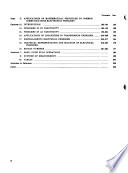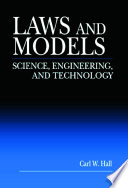 | James Atkins Bullard, Arthur Kiernan - Trigonometry - 1922 - 252 pages
...form should be completed in this manner before opening the tables. 11. Co-logarithms. We have shown the logarithm of the quotient of two numbers is equal to the difference of the logarithms of the numbers; ie, N log jj=fog #-log M. (1) In order to obviate the... | |
 | Lloyd Leroy Smail - Finance - 1925 - 338 pages
...equal to the sum of the logarithms of the factors: log M • N = log M + log N. II. The logarithm of a quotient of two numbers is equal to the logarithm of the dividend minus the logarithm of the divisor: log -= = log M — log N. III. The logarithm of a power of a number... | |
 | Encyclopedias and dictionaries - 1926 - 890 pages
...calculation: 1. The logarithm of a product is equal to the sum of the logarithms of its factors. 2. The logarithm of the quotient of two numbers is equal to the logarithm of the dividend less the logarithm of the divisor. 3. The logarithm of a number affected by an exponent is equal to... | |
 | W. G. Borchardt, A. D. Perrott - Trigonometry - 1928 - 492 pages
...extended to the product of any number of factors, thus log (mnp) = log m + log n + log p. 57. Theorem II. The logarithm of the quotient of two numbers is equal to the difference of the logarithms of the numbers. Let logro = x .'. m = 10*, log n = y .'. n = 10", 10»... | |
 | Paul Carus - Religion - 1914 - 876 pages
...that the logarithm of the product of numbers is equal to the sum of the logarithms of those numbers, the logarithm of the quotient of two numbers is equal to the logarithm of the numerator diminished by the logarithm of the denominator, the logarithm of a power of a number is equal... | |
 | Electrical engineering - 1992 - 270 pages
...5 ~ 1 5« = 3 x = .6 antilog 1.9403 = 87.16 2.11 X 41.3 = 87.16 1 22. Division by Use of Logarithms The logarithm of the quotient of two numbers is equal to the difference between the logarithms of the numbers. Thus, log (75 -=- 83) = log 75 — log 83, and log... | |
 | H. Craig Davis - Political Science - 1995 - 132 pages
...logarithms, manipulating a calculator capable of computing natural logarithms, or using a computer. 2. The logarithm of the quotient of two numbers is equal to the logarithm of the numerator minus the logarithm of the denominator. /n(a/6) = ln a - ln b (a, 6 > 0) (B.5) For example,... | |
 | Carl W. Hall - Technology & Engineering - 2018 - 566 pages
...Napier, 1. The logarithm of the product of two numbers is the sum of the logarithm of each number. 2. The logarithm of the quotient of two numbers is equal to the logarithm of the dividend minus the logarithm of the divisor. 3. The logarithm of a power of a number is equal to the product... | |
 | William Guy Peck - Calculus - 1870 - 244 pages
...have, after reduction, , fs -f ds\ -.(ds ds2 ds* , log -- = * - + - etcBut the logarithm of a quotient, is equal to the logarithm of the dividend, diminished by the logarithm of the divisor; changing the form of the first member and suppressing all the terms in the second member, after the... | |
 | Surveying - 1892 - 758 pages
...Prove that the logarithm of 1 is 0 whatever the base may be. 2. Prove that the logarithm of a quotient is equal to the logarithm of the dividend diminished by the logarithm of the divisor. 3. Given log. 2 = .3010300 find log. J (1.25). 4. Find by logarithms :— The 19th power of 1.001786,... | |
| |